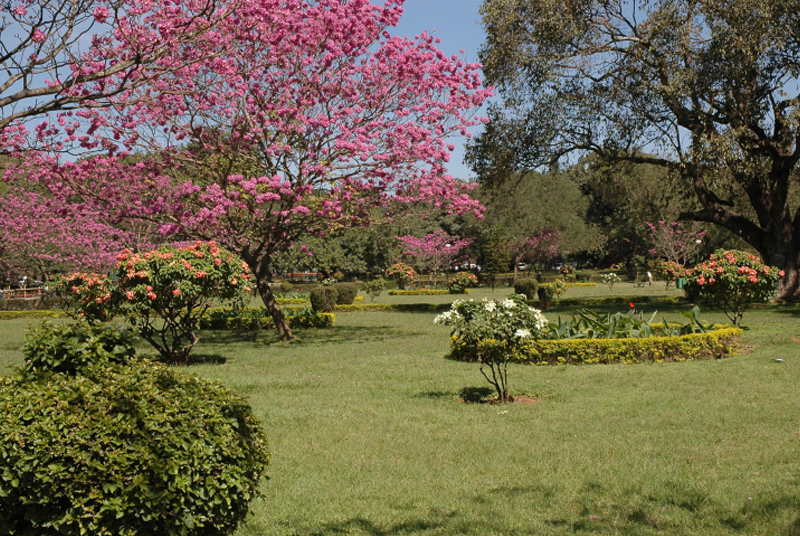About
The Cubbon Park is situated in the central administrative area of the city of Bengaluru, Karnataka. The park houses buildings that are aesthetically designed, magnificent statues of famous personalities, and rich flora and fauna. The popularity of the park can be gauged from the fact that Bengaluru is nicknamed the Garden City after the park. The natural beauty of the park-flowerbeds, massive bamboo trees, monuments, statues and buildings--makes the landscape interesting for not only tourists but also enthusiasts, nature-lovers, joggers, naturalists and botanists.
Cubbon Park was created by the British Chief Engineer of Mysore, Major General Richard Shankey in the year 1870. At first in 1870, the park was named after the then acting Commissioner of Mysore, Sir John Meade, as the Meade's Park. Later it was renamed to Cubbon Park after Sir Mark Cubbon, who was the longest-serving commissioner of his time. In 1927 it was renamed again as Sri Chamarajendra Park after the renowned ruler Sri Chamarajendra Wodeyar of the famous Wodeyar Dynasty. Originally the park covered an area of about 100 acres, which was later extended to 300 acres. Currently the maintenance and administration of the park is controlled by the Department of Horticulture, headed by its Deputy Director.
Statues of Queen Victoria, King Edward VII, Sri Chamarajendra Wodeyar, Major General Sir Mark Cubbon and Rajya Dhurandhara Sir K. Sheshadri Iyer are installed in the park complex.
In this park you will find numerous botanical species of both native and exotic types. While some of the native species are ficus, cassia fistula and artocarpus, the exotic ones include bamboo, peltophorum, araucaria and mahagoni. Over 6,000 trees and plants cover the park. Thus, it is a place of interest for botanists, researchers and students. The roads of the park are ornamented with beautifully lined exotic flowering trees. One of them, the silver oak, is among the first oaks that were imported from Australia and introduced in Bengaluru. Another beauty lining the roads of the park is the gulmohar tree, with its bright red flowers that has long petals.
The different avenues of the park are beautified with different flora beds. The northern side of the park has an avenue of Swieteninas; the road from the Central Public Library to Hudson Circle has an avenue of araucarias; the road leading to the Government Museum has a java fig avenue; and the Chamarajendra statue to Siddalingaiah Circle has an avenue of chestnut trees. It seems nature has flourished in this place with as many colours as it could. The lotus pond, the bamboo groove nook, and the Ringwood Circle are some of the other attractions of the park.
The walking paths in the precincts of the park help you touch each and every location of the park. Light motor vehicles are allowed to pass through the road of the park, except from 5 a.m. to 8 a.m. Its vast green landscape acts as the lungs of the city, protecting its environment for the Bengaluru people, many of whom start their day here with a breath of fresh air and stress-free mind.
The Band Stand at the Cubbon Park needs a special mention, though it has lost its splendour of late. An octagonal structure of cast iron, this place was once graced by renowned musicians and artists of national and international fame. Music concerts were often held here. Prakruti, an NGO, is trying to revive it by approaching artists and organizers for holding concerts.
Location and how to reach
As the park is located in the central administrative area of the city of Bangalore, it is quite accessible from Gandhinagar, Hudson Circle, MG Road, and Ambedhkar Veedhi. The city of Bangalore is well connected with other metro cities of India through rail and air. Many international flights come directly to the city. It is easily approachable from most of the important cities and towns of South India by road and rail.
Last Updated on : November 13, 2025

